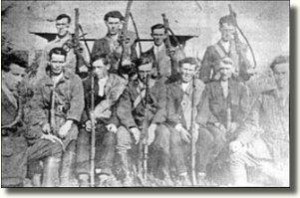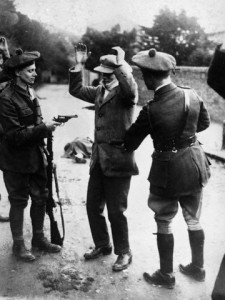Guerrilla Days in Kerry, an interview with Thomas Earls Fitzgerald

Thomas Earls Fitzgerald, who has been researching the Irish Revolution in County Kerry, talks to John Dorney of the Irish Story about the impact of guerrilla warfare on the civilian population.
Fitzgerald, who also contributed this article on the subject, starts off by talking about how initially much Volunteer or IRA activity was directed at policing the civilian population and coercing those who, in the wake of he Republican victory in the 1918 election, still associated with Crown forces or British institutions.
Some effort also, he notes, went into suppressing crime, calming land agitation of landless farmers and at times keeping ‘undesirables’ such as Irish travellers out of the County. Ritual hair cutting and sometimes physical punishment was also meted out to women and girls who associated with Crown forces.
But he argues that lethal violence against civilians in Kerry only began with the introduction of the paramilitary police, the Black and Tans and Auxiliaries into the County in the summer of 1920. Their indiscriminate violence against civilians, is, Fitzgerald argues, wrongly referred as a ‘reprisal campaign’ as much of it occurred at times and in places where there had been no prior IRA attack. We detail the ‘reprisals carried out in places such as Tralee in 1920 and Ballylongford in February 1921.

This led to a much more lethal phase of the conflict as the IRA columns, particularly in north Kerry, hit back at Crown forces, often with startling ruthlessness. It was also the phase in which the IRA began to shoot civilians as informers in Kerry in significant numbers.
The violence of the Civil War too Fitzgerald argues can also be interpreted to some extent as two rival armed forces attempting to coerce the civilian population and bend it to their will. The Ballyseedy massacre of 1923 was a long term outgrowth of a local grudge between the IRA and a north Kerry farmer.
Free State forces, who saw Kerry, mostly correctly, as hostile territory were also notoriously ill disciplined and brutal in the County, notably in the ‘Kenmare case’, the brutal assault of the daughters of a local doctor.
In essence then, the period he argues is typified by a conflict to successfully control the civilian population, many of whom simply wanted to be left alone, whatever their political sympathies.